Chicken of the Woods
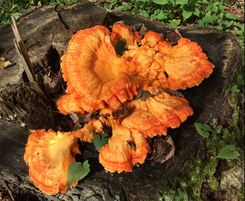
What I found was not a hat. it was a bright orange, huge mushroom growing out of a tree stump! It was a flat, ‘bracket’ shaped mushroom, that was growing from the top edge of a large cherry tree stump that our loggers had cut out three years before! I had never seen something like that in over thirty years and I was puzzled. Of course, I took a picture and wanted to investigate my “find”. As always, other things had priority and it was all pushed to the back burner.
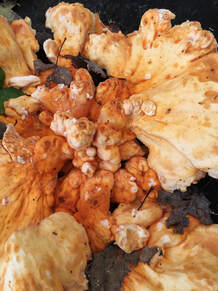
I know that in nature, bright reds and oranges can be fatal flags to predators, but I don’t know the drill when it comes to plants or fungi! So I decided to be cautious. I didn’t want to touch anything with my bare skin, that might be harmful.
When I touched the mushroom it felt firm, but not hard, almost like a piece of meat. I could not break off a piece, so I left everything and wanted to go back a week later. But then we had snow and the mushroom was disappearing under a white blanket. Out of sight, out of mind!
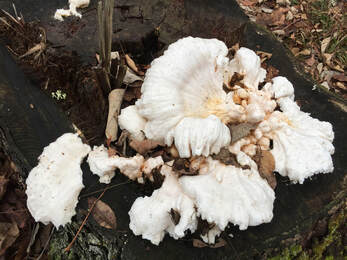
Now I did my research and found out that I was looking at a “Laetiporus sulphureus”, a mushroom that can be found almost everywhere on earth. Laetiporus means “with bright pores”. It is edible and is usually called “chicken of the woods”, “the chicken mushroom” or “chicken fungus”, because some people think it tastes like chicken.
The mushroom grows on wounds of trees or tree stumps of oaks, cherries, chestnut, willows and some conifers species. It has a sulphur-yellow to orange body and bright orange tips. It needs warm and moist weather to grow. Well, we had a warm and very moist fall in the Northeast! In fact, it was the 4th wettest year recorded.
So what should I do with my big mushroom? Some of these mushrooms can grow to 100 pounds on a tree stump. Mine was not that big, just around 3 pounds.
(You think 100 pounds is a big mushroom? Not even close. In the 1980's, scientists in the Upper Peninsula of Michigan, discovered a single subterranean fungus (Michigan Armillaria gallica) which feeds on tree roots and rotting wood, which they believed sprawled under 30 acres of forest and was probably 1500 years old and weighed as much as the biggest whale! In fact, as reported on Jan. 8, 2019 in the New York Times, this one individual is now believed to spread over 180 acres and be a minimum of 2500 years old!)
Along the same vein, I was surprised to find recipes on how to cook it, along with a warning not to eat it uncooked! You should not use it anymore when it breaks easily. Another warning says not to gather the ones on conifers as they might not agree with people.
As dire, as all this starts to sound, I was even more surprised to find in specialty stores, that you can buy “chicken of the woods” for almost $18.00 a pound! It is considered a delicacy. One of the selling points was that “chicken of the woods” is an attractive alternative for “vegan consumers”. It also can be frozen for long periods of time and it remains edible.
There may also be health benefits in this mushroom: It purportedly fights staph bacteria and bacillus subtilis.
And there was another surprise: a big mailing house offers “mushroom seeds” so you can grow your own chicken of the woods!
So, did we eat it? No. Our experiences in life made us too cautious for now, but we want to make sure that it is edible. Next year it will probably come back and it may very well be delicious!
After publishing, Rob, one of our loyal readers, sent me this e-mail:
"We collect them. I slam on the brakes when I see them by the side of the road. Yummy.
Cut them off the tree. Cut off too hard parts. Saute in butter and enjoy."
As he has been doing this for years, he obviously knows enough to recognize the ones that will be safe to eat.
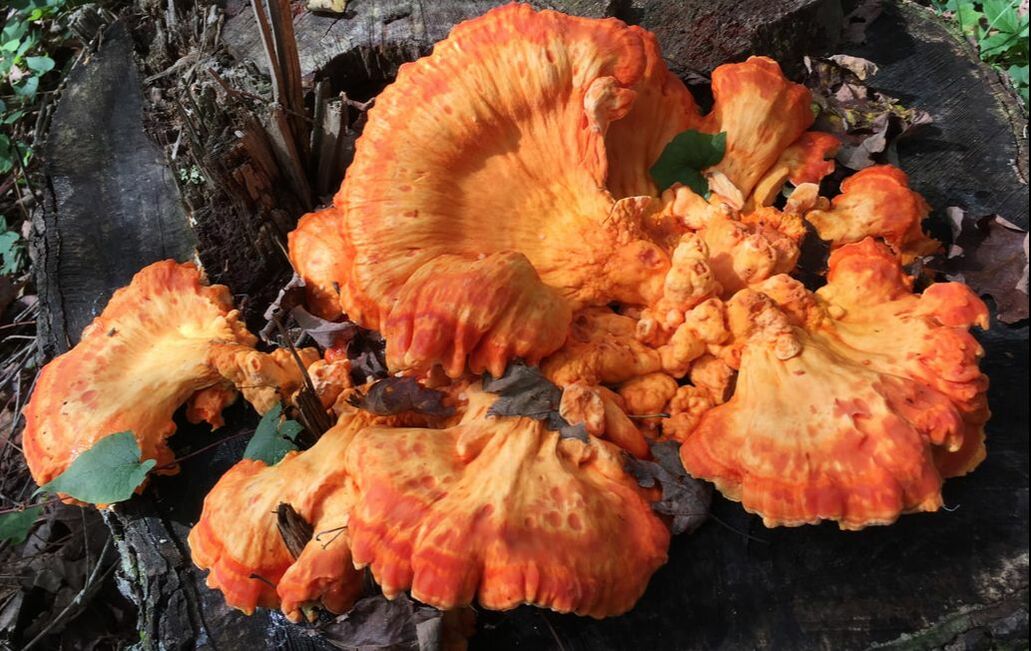
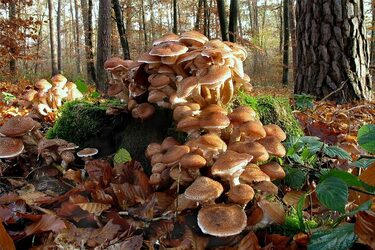
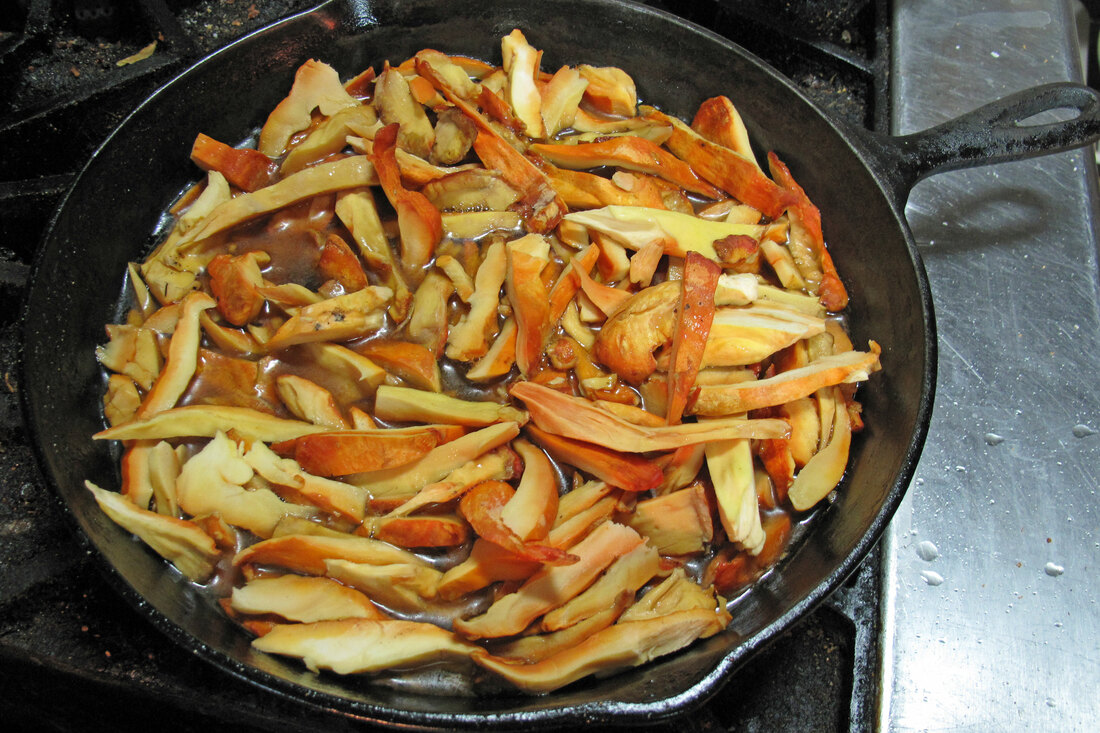
 RSS Feed
RSS Feed